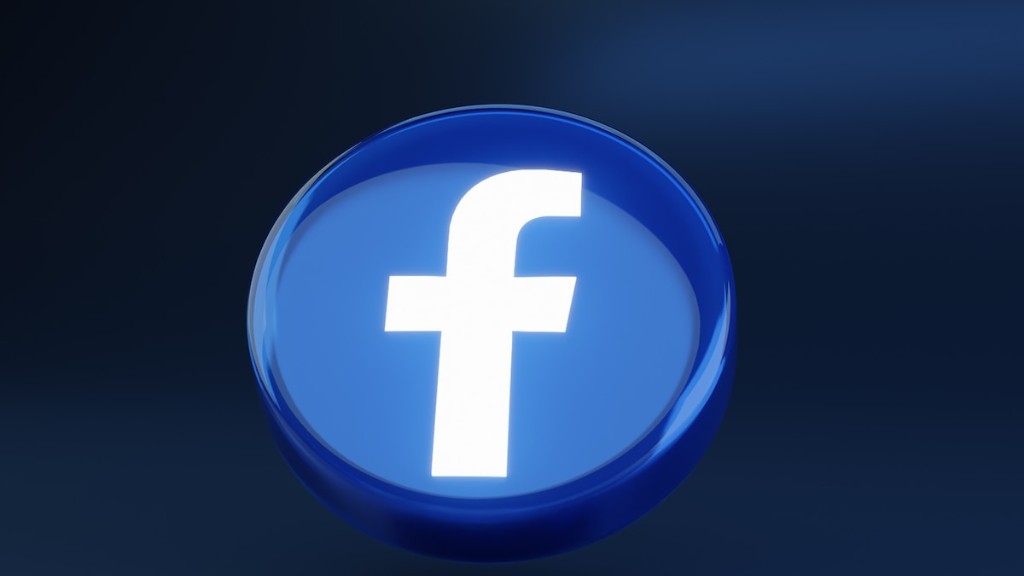A sales funnel is a digital marketing tool that allows businesses to track and measure the number of potential customers as they progress through the sales process. By understanding where customers drop off at each stage of the funnel, businesses can identify areas in need of improvement in order to increase conversion rates.
A sales funnel is a digital marketing term that refers to the journey a potential customer takes from being aware of a product or service to becoming a paying customer.
What is a sales funnel and how does it work?
A sales funnel is a process that takes prospects from initial contact to becoming a customer. There are typically three stages to a sales funnel: Awareness, Interest, and Decision.
Awareness is the first stage of the funnel, where prospects are first becoming aware of your product or service. Interest is the second stage, where prospects are considering your product or service as a solution to their problem. Decision is the third and final stage, where prospects are ready to make a purchase.
A well-planned sales funnel will define the actions your business needs to take to push prospects to the next stage. For example, if you want to increase the number of prospects in your Awareness stage, you may need to invest in more marketing. If you want to increase the number of prospects in your Interest stage, you may need to provide more information about your product or service. And if you want to increase the number of prospects in your Decision stage, you may need to offer a discount or special promotion.
The sales funnel is a key tool for any business looking to generate leads and convert them into customers. By understanding the four stages of the sales funnel, businesses can optimize their sales process and compel leads to take action and become customers. The four stages of the sales funnel are awareness, interest, decision, and action. By understanding each stage and how to optimize it, businesses can ensure that their sales funnel is working effectively to generate leads and convert them into customers.
What is an example of a sales funnel
An effective sales funnel is one that helps you to convert your prospects into leads. A simple example of this would be to run a Facebook ad that drives traffic to a landing page. On the page, you ask your prospect to sign up for your email list in exchange for a lead magnet. This way, you have leads instead of just prospects.
The 5 Sales Funnel Stages are Awareness, Discovery, Evaluation, Intent Purchase.
In the Awareness stage, your goal is to make prospective customers aware of your company and products. In the Discovery phase, your prospects are interested in your company and products and want to know more. In the Evaluation stage, your prospects are evaluating your products and services to see if they meet their needs. In the Intent Purchase stage, your prospects are ready to buy and are just looking for the best deal. Finally, in the Purchase stage, your prospect has made the decision to buy and is just completing the purchase.
What is the goal of a sales funnel?
A sales funnel is a great way for organizations to track their sales progress and to make necessary adjustments along the way. This feedback allows for a more efficient use of time and resources, and ultimately results in more sales.
The top of the funnel (TOFU) is the stage of awareness. This is when potential customers are first learning about a product or service.
The middle of the funnel (MOFU) is the stage of consideration. This is when potential customers are evaluating their options and considering whether to purchase a product or service.
The bottom of the funnel (BOFU) is the stage of conversion. This is when potential customers are ready to make a purchase.
What are the 7 layers of the sales funnel?
Sales funnels are a great way to track and manage your sales process. By understanding the different stages of a sales funnel, you can more effectively manage your leads and close more deals.
The seven stage sales funnel is a great model to use when tracking your sales process. However, there is one stage that is often forgotten: the Revive Dead Leads stage.
Dead leads are a common occurrence in any sales process. However, revive these leads and you can close more deals. Here are a few tips on how to revive dead leads:
• Research your leads. Before you give up on a lead, make sure you have researched them thoroughly. Look for any recent changes in their company or personal life that may have caused them to go cold.
• Reach out to them. Once you have researched your lead, reach out to them directly. This can be done through a phone call, email, or even social media.
• Offer something new. When you reach out to a dead lead, offer them something new that they may be interested in. This could be a new product, service, or even a discount.
By following these tips, you can revive your dead leads and close more deals.
A sales funnel is a process that takes your potential customers from being aware of your product to becoming paying customers. In order to create a sales funnel, you need to define the problem you want to solve for your customers, set your goals, create a preliminary offer, qualify leads, nurture your qualified leads, and close the deal. You also need to track the final results and analyze sales data in order to improve your sales funnel.
Do sales funnels really work
Sales funnels are an incredibly effective way for businesses to turn leads into customers. Companies that create an easy buying process are 62% more likely to win a high-quality sale. Moreover, companies that excel at lead nurturing generate 50% more sales-ready leads at 33% lower cost.
Sales funnels are not unique to companies and products—they exist anytime there is a decision to be made. By understanding how these work, you can be better equipped to create a funnel that leads your customers to make a purchase from you.
The typical sales funnel has four distinct stages, which are:
Awareness: This is the stage where potential customers are made aware of a company’s products or services. At this stage, customers are not yet looking to purchase anything, but they are becoming aware of a problem that they need to solve.
Interest: In this stage, customers are beginning to consider solutions to their problem and they are interested in learning more about the products or services that a company has to offer.
Consideration: In this stage, customers have decided that they need a solution to their problem and they are now considering their options. They are researching different products or services and trying to decide which one is right for them.
Purchase: This is the stage where customers make a purchase and become paying customers or clients.
After the purchase, there is still one more stage—the post-purchase stage. This is the stage where customers use the product or service and may provide feedback. This feedback can
Which sales funnel is best?
Sales funnels are a great way to increase your conversion rate and grow your business. However, with so many options on the market, it can be tough to choose the right one for your needs.
Here are some of the best sales funnel software options for 2022:
ClickFunnels – Unlimited contacts and powerful features make this a great option for businesses of all sizes.
HubSpot – Contact management features and integrations make this a great choice for businesses that want to manage their sales funnel in one place.
Wishpond – Good looking templates and easy-to-use tools make this a great choice for businesses that want to create beautiful sales funnels.
Thrive Suite – Good value for money and plenty of features make this a great choice for businesses that want a comprehensive sales funnel solution.
Keap – Plenty of options and a robust platform make this a great choice for businesses that want a customizable sales funnel solution.
Leadpages – Collect unlimited leads and create beautiful landing pages with this powerful sales funnel software.
Landingi – Great looking landing pages and powerful features make this a great choice for businesses that want to create high-converting sales funnels.
Instapage – Soph
A marketing funnel is a process that takes potential customers through a journey from awareness to purchase. It’s a way toadvertise a product or service to give leads a reason to buy.
Whereas, the sales funnel deals with the leads (from the marketing funnel), enticing them to buy, not once, but as often as possible.
Your sales and marketing teams need the best technology to be as productive as possible. The right tools will automate and optimize your marketing and sales processes so you can focus on what you do best: growing your business.
What are the 2 types of the marketing funnel
There are several types of marketing funnels that you may come across:
1. Lead magnet funnels: These are designed to attract leads and get them to sign up for your list.
2. List building funnels: These are designed to grow your list by getting people to sign up for your emails.
3. Sales funnels: These are designed to get people to buy your products or services.
4. Engagement funnels: These are designed to keep people engaged with your brand and encourage them to take action.
The B2B sales funnel is a way of thinking about the journey that your prospects take as they move from being unaware of your product or service, to becoming a paying customer.
There are a number of different models that you can use to think about the B2B sales funnel, but they all essentially break down into three main stages:
Awareness: The prospect becomes aware of their need or problem.
Interest: The prospect becomes interested in finding a solution to their need or problem.
Evaluation: The prospect evaluates their options and decides on a solution.
Purchase: The prospect makes a purchase and becomes a customer.
After the purchase, there is usually a post-purchase stage where the customer is retained and upsold to additional products or services.
While the exact steps and stages will vary depending on the product or service, and the specific buyer journey, this is a general outline of how the B2B sales funnel works.
Why funnel is important in digital marketing?
The marketing funnel is important for a number of reasons:
1. It helps you to focus your marketing efforts on the right people at the right time.
2. It allows you to track the progress of your marketing campaigns and understand where people drop off.
3. It provides insight into what your prospects are thinking and how they make decisions.
4. It can help you to identify areas where your marketing needs improvement.
5. Ultimately, it can help you to increase sales and ROI.
A sales funnel is a process that businesses use to identify and qualify potential customers. It’s called a “funnel” because of its shape: wide at the top as prospects enter, then increasingly narrow as they are disqualified or decide not to buy.
The goal of a sales funnel is to convert as many prospects into customers as possible. To do this, businesses need to create a process that moves prospects through the funnel efficiently and effectively.
The sales funnel begins with generating leads, which are potential customers that have shown interest in your product or service. From there, businesses need to qualify these leads to determine if they are a good fit for their products or services. The next step is to turn these qualified leads into customers by making a sale. Finally, businesses need to nurture these customers to keep them coming back.
The sales funnel is a key part of any business, especially those that rely on sales for revenue. By understanding how the sales funnel works, businesses can improve their conversion rates and increase their sales.
Warp Up
The sales funnel is the process that companies use to turn potential customers into actual paying customers. The funnel is divided into several stages, each with its own purpose:
The awareness stage is the first stage of the funnel, where potential customers are made aware of a company and its products or services.
The interest stage is the second stage of the funnel, where potential customers are interested in a company and its products or services.
The decision stage is the third stage of the funnel, where potential customers decide whether to buy a company’s products or services.
The purchase stage is the fourth and final stage of the funnel, where potential customers actually purchase a company’s products or services.
Sales funnel in digital marketing is the process of turning potential customers into actual customers. It is a key part of any successful digital marketing strategy and can be used to track and measure the success of your marketing campaigns. By understanding the sales funnel, you can more effectively target your marketing efforts and improve your overall return on investment.





